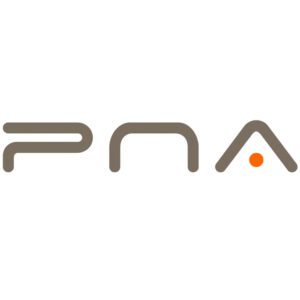The race to deploy Fiber to the Home (FTTH) networks faces persistent challenges in cost containment and timeline management. For network operators and contractors in the telecommunications space, addressing these barriers directly impacts profitability and market advantage. This article provides actionable methods with specific examples to transform your FTTH deployments.
Practical Cost-Reduction Methods
1. Micro-Trenching Implementation Case Study
Swedish operator Telia reduced deployment costs by 34% by switching to micro-trenching methods. Their approach:
- Cut 1.5-inch wide, 8-inch deep trenches compared to traditional 6-inch wide, 24-inch deep excavations
- Reduced restoration costs from $28 to $11 per linear foot
- Decreased crew size requirements from 6-8 workers to 3-4 workers per installation team
2. Aerial Deployment ROI Analysis
A mid-sized ISP in Colorado documented these comparative costs:
- Underground installation: $18-25 per foot
- Aerial deployment: $3-7 per foot
- Average cost reduction: 72%
- Project completion time reduced by 62%
3. Volume-Based Material Procurement
Horizon Communications established a consortium buying approach with neighboring providers:
- Bulk fiber purchases at 25,000+ meter quantities reduced per-meter costs by 17%
- Standardized hardware specifications across multiple projects enabled volume discounts of 22% on optical components
- Warehousing shared inventory decreased carrying costs by 11% annually
Time-Saving Techniques With Measurable Results
1. Specialized Permitting Teams
Google Fiber created dedicated permitting specialists who:
- Developed standardized application packages for each municipality
- Established bi-weekly meetings with local permitting authorities
- Reduced average permitting time from 45 days to 12 days
- Created a digital tracking system to identify bottlenecks in specific jurisdictions
2. Community Notification Process Optimization
Deutsche Glasfaser in Germany implemented:
- Area-specific deployment websites with interactive maps showing 3-week rolling construction schedules
- Automated text/email notifications to residents 72 hours before work begins
- Reduced work stoppages due to resident complaints by 64%
- Decreased inspector callbacks by 41%
3. Construction Method Selection Matrix
NBN Co in Australia developed a decision framework based on:
- Soil type and ground conditions (rock content analysis)
- Existing utility density per linear foot
- Population density thresholds
- Cost-benefit analysis of each method adjusted for local conditions
This matrix reduced method selection meetings from weeks to hours and decreased inappropriate technique selection by 37%.
Innovative Equipment and Tools
1. All-In-One Installation Vehicles
Verizon’s custom FTTH deployment trucks include:
- Integrated fiber splicing lab with climate control
- Onboard power generation for equipment
- Real-time testing capability linked to central operations
- GPS-guided underground utility detection
- Average reduction in installation time: 2.8 hours per location
2. Drone-Based Pre-Survey
CenturyLink implemented aerial survey drones that:
- Completed pole-line surveys at 5.8 miles per day versus 1.2 miles for ground crews
- Provided 3D pole models to identify attachment points and clearance issues
- Reduced make-ready engineering time by 64%
- Decreased unexpected field issues by 47%
3. Pre-Connectorized Distribution Systems
Orange’s deployment in France utilized:
- Factory-terminated fiber distribution terminals
- Plug-and-play subscriber connection points
- Reduced field splicing by 86%
- Cut connection time from 42 minutes to 15 minutes per subscriber
Labor Optimization Strategies
1. Cross-Training Program
A regional fiber contractor implemented a skills-expansion program:
- 4-day training rotation between splicing, trenching, and testing crews
- Reduced crew idle time by 23% through flexible resource allocation
- Increased employee retention by 34% through skill diversification
- Cross-trained employees commanded 22% higher wages but improved project completion rates by 31%
2. Incentive-Based Completion Structures
AT&T piloted a performance-based deployment program with:
- Daily installation targets with team bonuses for exceeding goals
- Quality metrics tied directly to compensation
- Average installation rate improved from 12 to 19 homes per day
- First-time connection success rate increased from 89% to 96%
3. Local Workforce Development
EPB Chattanooga partnered with local technical colleges to create:
- 12-week fiber technician certification program
- Paid internships for students in the final month of training
- Reduced labor costs by 14% compared to importing crews
- Decreased training time for new hires by 65%
Customer Adoption Acceleration
1. Pre-Deployment Marketing Campaign
Cox Communications’ advanced registration approach:
- Launched neighborhood-specific landing pages 90 days before construction
- Offered first 3 months at 50% discount for pre-construction sign-ups
- Deployed street teams at community events with tablet-based registration
- Achieved 42% pre-deployment sign-up rate versus typical 18% first-year adoption
2. Installation Experience Optimization
Google Fiber reduced install duration and increased customer satisfaction by:
- Providing two-hour installation windows instead of half-day blocks
- Using text updates with technician location tracking
- Implementing video tutorials sent 24 hours before appointments
- Reduced installation rescheduling by 47%
Real-World Results
A mid-market provider implementing these techniques reported:
- Deployment cost reduction from $1,425 to $870 per home passed
- Timeline compression from 16 months to 9 months for a 15,000-home build
- Break-even period reduced from 54 months to 36 months
- Customer satisfaction scores 24% higher than industry average
By implementing these specific, proven strategies, FTTH providers can significantly reduce deployment costs and accelerate timelines while maintaining quality standards. The key is selecting the right combination of techniques based on local conditions, regulatory environment, and organizational capabilities.


